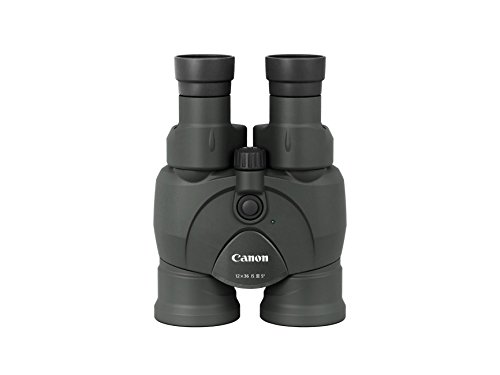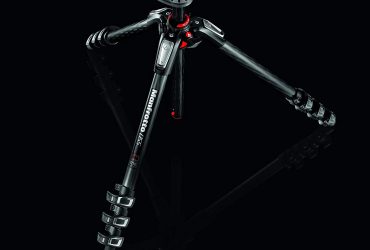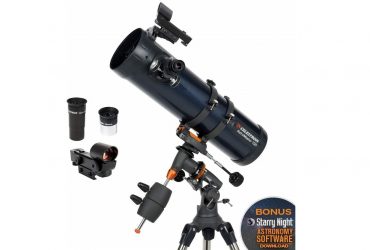Image Stabilising Binoculars {Pros + Cons}
Image stabilising binoculars, also called image stabilised binoculars, use various mechanism to reduce the wobble, blurring and shaking that is common when observing something with a pair of binoculars.
Binoculars magnify objects, making it easier to see something that’s far off. They are handy for bird watching, wildlife tracking and security among other uses. In astronomy, binoculars are great for stargazing and observing nebular, the moon and some planets.
However, the magnification that makes binoculars so useful also affects image quality.
It’s impossible to keep your hand completely still when holding a pair of binoculars. Binoculars intensify these movements, making images appear shaky and wobbly. You may also see blurring when you move the binoculars across the sky or when you are observing a moving object like a deer.
Image stabilised binoculars reduce or eliminate that shakiness.
How Image Stabilising Binoculars Work
There are two types of image stabilising binoculars: active and passive.
- Active image stabilised binoculars use an electronic sensor to detect when the image is shaky or blurry. The system then takes corrective action – by either adjusting the lenses or changing the angle of the fluid in the prism – to stabilise the image.
- Passive systems typically use a gyroscope to maintain a steady image no matter how much your hands move.
Advantages of Image Stabilising Binoculars

The obvious advantage of using image stabilised binoculars is that you’ll enjoy a better and more comfortable viewing experience.
Instead of seeing shaky stars and galaxies, you get a stable image. This makes it easier to study details of whatever you are observing and appreciate their beauty.
Panning across the sky also becomes easier on your eyes since the image stabilising mechanism eliminates blurring.
Image stabilisation is especially important in high-magnification binoculars (10x and higher). That’s because, higher magnification worsens hand movements and shakiness.
With a pair of 15x binoculars, it is almost impossible to observe anything without blurring and shakiness, to the point of causing motion sickness.
Other advantages of image stabilisation in binoculars include:
- It’s easier and quicker to focus on an object, whether it’s a bird or a particular star.
- It’s easier to keep up with moving objects without experiencing blurriness.
- Reduced eye fatigue and motion sickness.
Disadvantages of Image Stabilising Binoculars
- They are heavy: Image stabilisation requires additional components, which increases the overall weight of the binoculars. This can make the binoculars uncomfortable to use especially over extended periods. They also reduce portability.
- Expensive: If you find a cheap pair of binoculars with image stabilisation, the stabilisation probably works poorly, only useful for small movements and vibrations. A good quality pair of image stabilising binoculars is going to cost you quite a bit.
How to Use Image Stabilising Binoculars
You use image stabilising binoculars just like any other binoculars. But some binoculars have a button that you have to turn on to activate image stabilisation.
This makes it easy to switch from a stabilised image to a normal one.
Other binoculars let you adjust intensity of stabilisation. There’s a setting for small movements and vibrations and another for more intrusive movements such as when you are walking or in a moving car.
We’ve also seen a few image stabilising binoculars with a setting specifically for moving objects.
Our Favourite Image Stabilising Binoculars: Canon 12 x 36 IS III Binoculars
They are pricey but the Canon 12 x 36 IS III are some of the best image stabilising binoculars for astronomy and other applications.
12x magnification provides a crystal clear close-up view of stars, galaxies, the moon and even the International Space Station.
To find out just how good the image stabilisation is, try using the binoculars with stabilisation turned off. As most users found out, the image is shaky, blurry and downright uncomfortable to look at.
Press the image stabilisation button and everything goes still. It becomes super easy to hunt objects in the sky and focus on them.
When you are not using the Canon binoculars to stargaze, they are great for birdwatching, watching games from the stands, wildlife observations and many other terrestrial applications.
The image stabilisation is especially useful when you are trying to focus and follow a moving object such as a bird or a player on the field.
What we like about them:
- Excellent image stabilisation.
- High resolution even at 12x magnification.
- Porro prism design provides a wider field of view, no vignetting and excellent contrast.
- Comfortable eye relief, even for eyeglass wearers.




